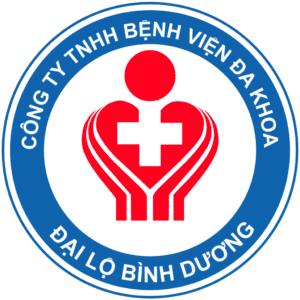For many children, learning to run, jump, write, or even tie shoelaces can be an exciting milestone. But for some, these seemingly simple tasks come with extra hurdles. Conditions such as dyspraxia—a developmental coordination disorder—can make everyday movement and motor planning more challenging. While these struggles can sometimes go unnoticed, they can have a profound impact on a child’s confidence, independence, and ability to participate in daily life fully.
The good news is that, with proper support, patience, and practical strategies, children can overcome these barriers and develop the skills they need to thrive. Let’s examine five common challenges children face with movement—and how families can support them.
1. Struggles with Fine Motor Skills
Fine motor skills involve the small muscles in the hands and fingers that allow children to grasp, write, cut, and button clothes. Children with coordination difficulties often find tasks such as using scissors, tying shoelaces, or writing neatly particularly frustrating.
How to help:
- Break tasks into small, manageable steps.
- Provide tools that are easier to grip, such as thicker pencils.
- Encourage activities like building with blocks, playing with playdough, or threading beads to strengthen hand muscles.
Small, regular practice sessions make the task less overwhelming and allow children to celebrate progress along the way.
2. Difficulty with Gross Motor Activities
Gross motor skills refer to larger movements that involve the arms, legs, and the entire body. Children may find running, climbing, catching, or balancing more challenging than their peers, which can lead to frustration during play or sports.
How to help:
- Focus on fun, not competition. Activities like dancing, obstacle courses, or riding scooters can build skills in enjoyable ways.
- Encourage outdoor play that naturally strengthens muscles and coordination.
- Offer gentle guidance and plenty of encouragement when your child tries new movements.
By creating a safe, non-judgmental space, children feel more willing to practise and improve their gross motor abilities.
3. Challenges with Daily Routines
Everyday routines—such as getting dressed, brushing teeth, or packing a school bag—often require a combination of motor planning, sequencing, and coordination. For kids who face difficulties in these areas, these routines can feel like daunting tasks.
How to help:
- Use visual schedules or checklists to guide them through steps.
- Give extra time for completing routines so they don’t feel rushed.
- Practise independence by gradually reducing the level of assistance provided.
Supporting children through these routines helps build confidence and a sense of accomplishment.
4. Problems with Handwriting
Handwriting can be one of the biggest challenges for children with coordination difficulties. They may struggle to hold a pencil correctly, apply the correct pressure, or write at a consistent speed. This can lead to frustration, especially in a classroom setting.
How to help:
- Encourage pre-writing exercises, such as drawing shapes, colouring, or tracing.
- Allow alternative methods of completing schoolwork where appropriate, such as typing.
- Use supportive materials, such as pencil grips or lined paper, to guide hand placement.
Building handwriting skills takes patience, but consistent support allows children to make steady progress.
5. Difficulties with Balance and Coordination
Balance and coordination play a role in everything from sitting upright to riding a bike. Kids with difficulties may appear clumsy, bump into objects, or avoid activities that require body awareness.
How to help:
- Practice activities that focus on balance, such as yoga poses or standing on one foot.
- Provide supportive environments, such as safe playground spaces where children can explore without fear of injury.
- Introduce games that involve rhythm and movement, such as hopscotch or jumping rope.
Improving coordination not only supports physical ability but also boosts self-esteem when children realise they can keep up with peers.
Encouraging Confidence Alongside Skills
While physical ability is important, confidence is often the area most impacted by movement struggles. Children may compare themselves to their peers and feel left behind. Building a nurturing, encouraging environment ensures that they don’t lose sight of their strengths.
Parents and caregivers can:
- Celebrate small successes, no matter how minor.
- Focus on effort and persistence rather than perfection.
- Provide reassurance that everyone develops at their own pace.
Confidence grows when children feel supported and valued for their unique abilities.
The Role of Professional Guidance
Some children may benefit from professional support to address coordination and motor planning challenges. With personalised strategies, therapy can target specific difficulties, such as handwriting or balance, while also boosting confidence. By involving families, these approaches ensure that skills learned in sessions are carried into daily life, making improvements more consistent and lasting.
Supporting Growth at Home and School
Consistency across environments is essential. Families, teachers, and professionals working together create the best outcomes for children. For example:
- Teachers can provide extra time for written work.
- Parents can develop routines at home that promote independence.
- Communities can offer inclusive opportunities for physical play and sport.
When support is shared, children experience less stress and greater success in mastering new skills.
Final Thought
Movement challenges, such as those linked with dyspraxia, can affect many aspects of a child’s daily life, from tying shoelaces to participating in sports. Yet with patience, encouragement, and practical strategies, these struggles can be transformed into opportunities for growth. By focusing on skill development, emotional well-being, and confidence, families can help children overcome barriers and thrive. Every step forward—no matter how small—is a victory worth celebrating.


